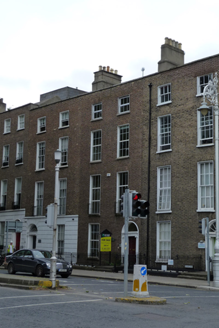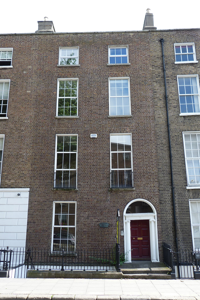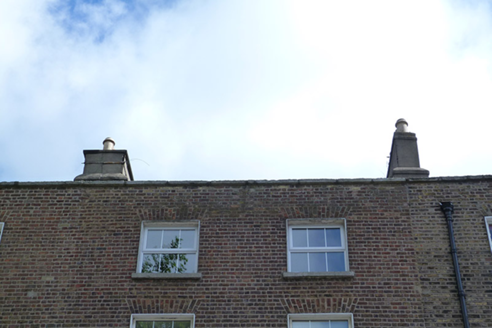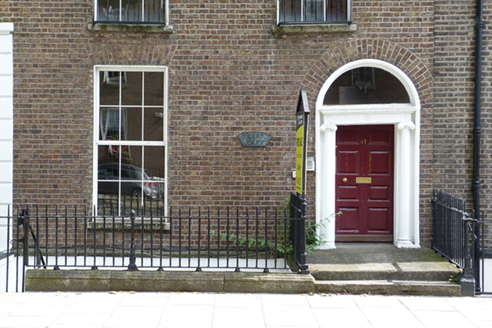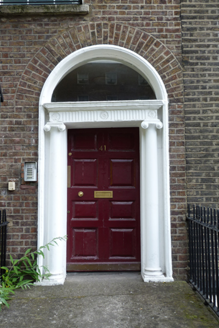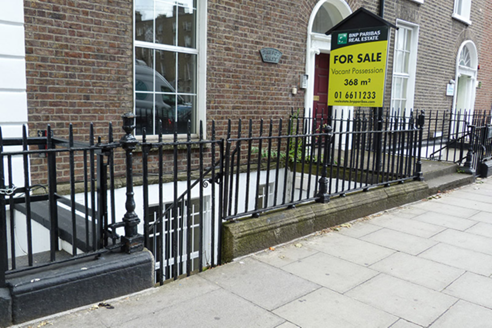Survey Data
Reg No
50100489
Rating
Regional
Categories of Special Interest
Architectural, Artistic
Original Use
House
In Use As
Office
Date
1790 - 1810
Coordinates
316665, 233275
Date Recorded
20/07/2016
Date Updated
--/--/--
Description
Attached two-bay four-storey former house over basement, built c. 1800 as pair with No. 40. Now in use as offices. M-profile pitched slate roof, hipped to east end of rear, behind brick parapet with granite coping. Shouldered rendered chimneystacks with clay pots; concealed rainwater goods. Flemish bond brown brick walling on granite plinth course over painted rendered walls to basement; painted rendered walling to rear. Square-headed window openings, diminishing in height to upper floors, with raised rendered reveals and painted granite sills. Replacement timber windows to basement and replacement uPVC to floors above; variety of timber sliding sash and replacement windows to rear. Wrought-iron balconettes to first floor and wrought-iron grilles to basement. Round-headed door opening with moulded render surround, doorcase with fluted frieze and cornice, engaged Ionic columns, plain fanlight and eight-panel timber door with brass furniture. Concrete platform with two concrete steps. Wrought-iron railings with decorative cast-iron posts on moulded granite plinth enclosing basement area.
Appraisal
No. 41 Baggot Street Lower is a well-proportioned late Georgian house. It retains the well-balanced proportions and graded fenestration pattern typical of the period, and also displays a fine Ionic doorcase and simple ironwork balconettes and railings that add decorative detailing to an otherwise restrained façade. The setting is also of intact appearance. Thus this building contributes significantly to the intact nature of this principal Georgian thoroughfare. The street is one of the ancient routeways out of the city of Dublin, named for Robert Baggot a local landowner. It was developed in the late eighteenth and early nineteenth centuries as part of the eastward expansion of the Georgian city. The houses maintain a relatively uniform building height and design, with architectural variations attributable to individual developers.
